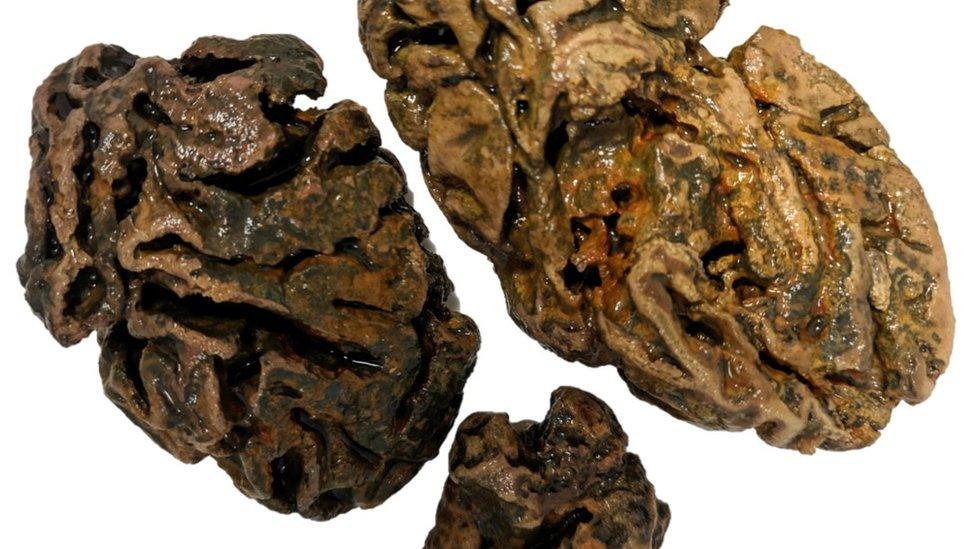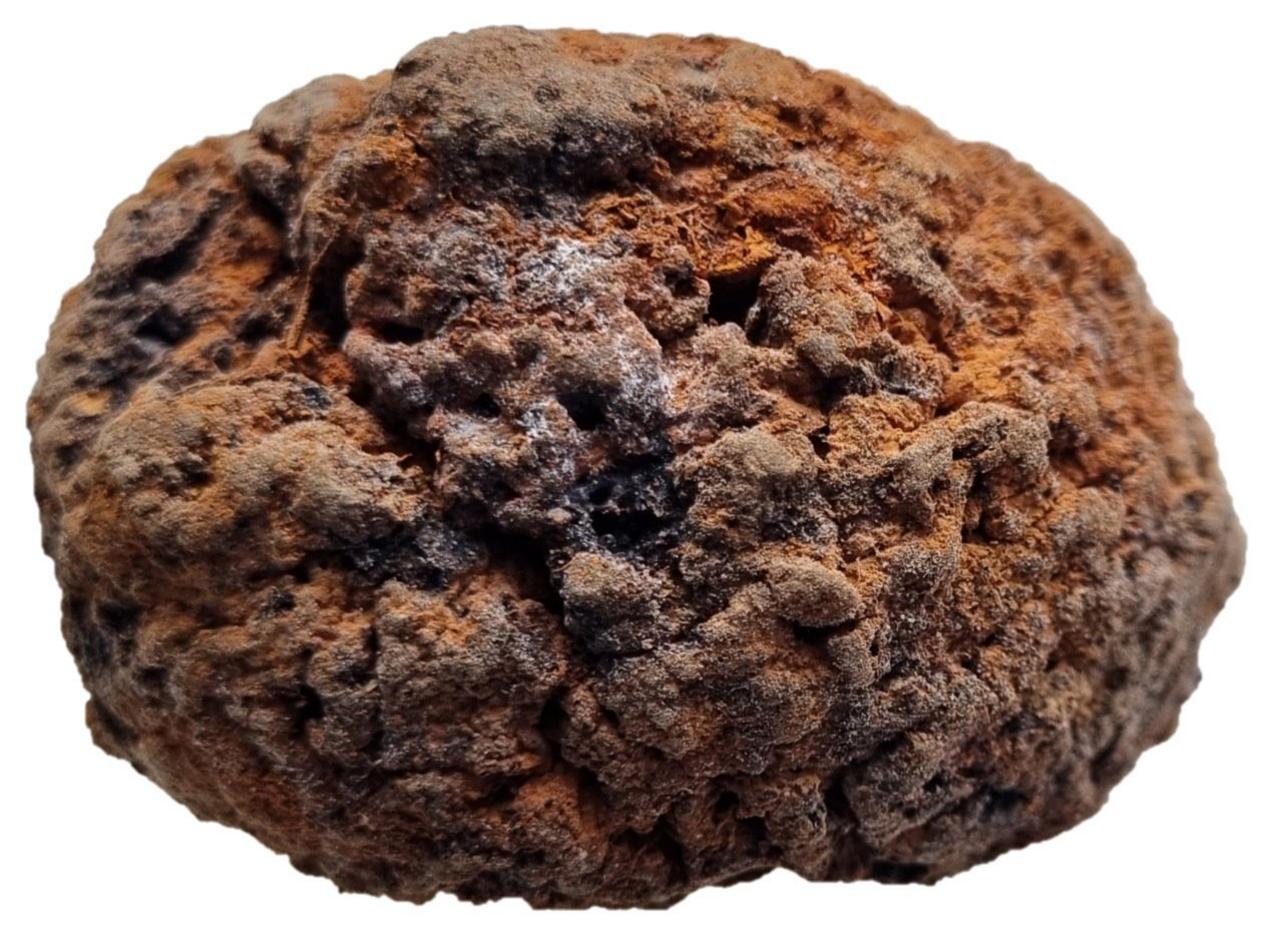What a big group of ancient brains could teach us about evolution
- Published
- comments

Some of the brains are up to 12,000 years old - these samples are from 200 years ago
Did you know scientists have a special archive of ancient human brains?
Yes - and it might sound a bit gross - but they think it will help us understand how humans evolved.
The collection contains different samples from all sorts of people, including Egyptian royalty, Arctic explorers and Danish monks.
Some of the samples are up to 12,000 years old, and come from all over the world.
Why so many brains?

This particular brain is from the 1600s
Archaeologists and anthropologists (that's people who study the history of humans) say it's usually very rare for brains to remain intact and preserved for a long time.
When bodies decay, their organs and natural tissue usually goes much earlier than things like bones and teeth, which are more commonly used to understand how humans lived in the past.
However, this new archive of brains by researchers at the University of Oxford found that there might be more evidence of brains hanging around for longer than we thought.
Around the world, there are different methods for looking after bodies after they die. You might have heard of one of them - mummification.
Ancient Egyptians used to extract someone's organs, put them into jars, then preserve the body using a method called embalming.
The brain was pulled out of the body through a hook which was put up people's noses.
Embalming helped to preserve brains, but there's other ways to keep a brain around for while!
International brain collective

Scientist Alexandra Morton-Hayward is holding a 1,000-year-old preserved brain
Brains used in this study were also found in super icy places, where the human tissue froze, and therefore did not rot away.
Some samples were found on the shores of a lakebed in Stone Age Sweden, the depths of an Iranian salt mine around 500 BC, and the summit of Andean volcanoes at the height of the Incan Empire.
The research shows that there's certain circumstances that help a brain stay around to be studied. This could be embalming or freezing, but also brains being preserved in peat bogs, or being dehydrated (dried out).
Some of the brains date really far back - to the Iron Age - and scientists still aren't quite sure how some have lasted that long.
It's hoped that the new research will teach scientists how these brain samples have hung around for a lot longer than expected.
